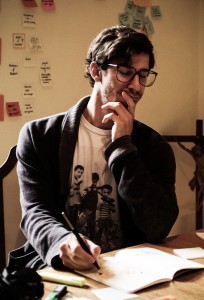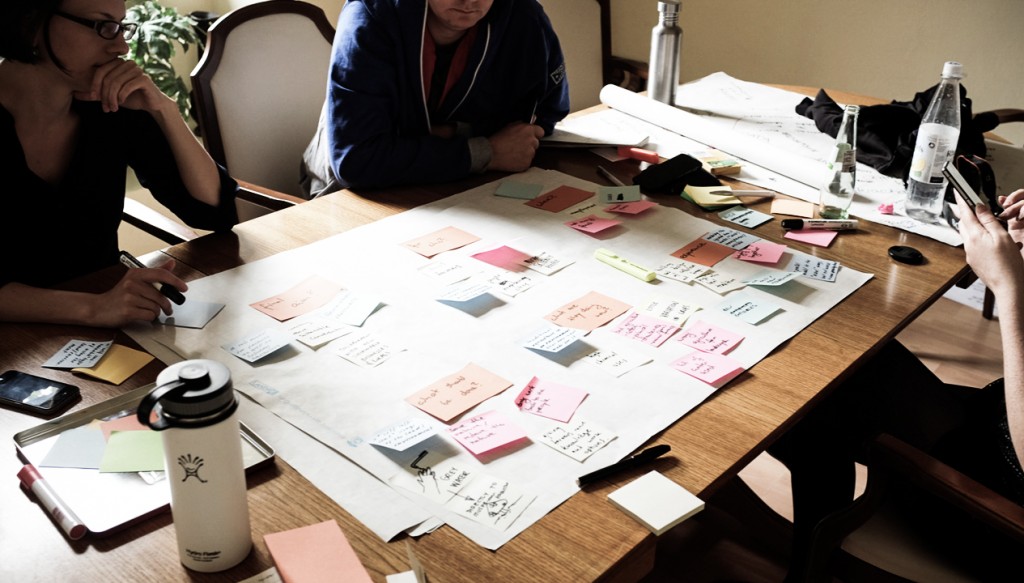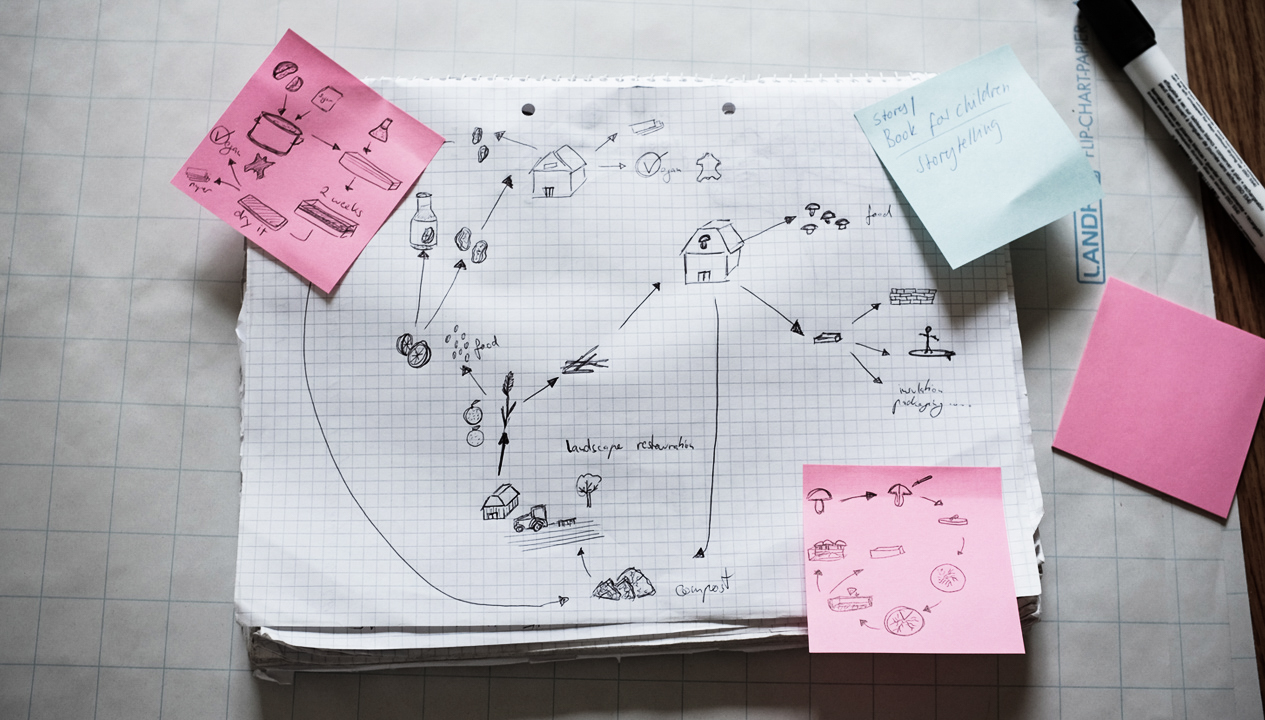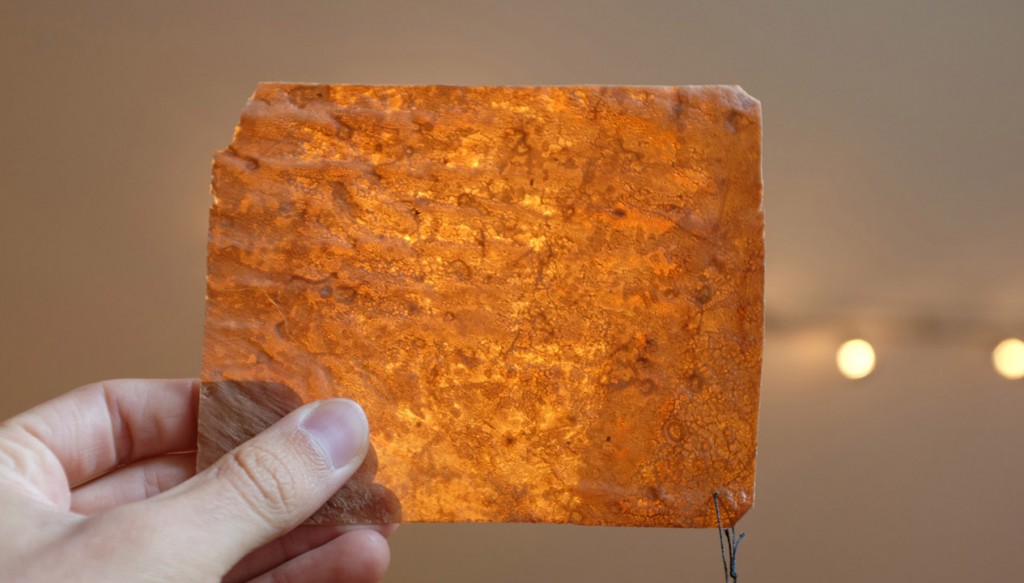In the 3rd and final installment of our Sustainable Summer School blog series, Product Design + Designmatters Concentration student, Daniel Bromberg reflects on his time spent at the 7th annual summer school program in Western Germany.
 The summer of 2015 was a time for sustainable discussion and insightful conversation. I made the trip to Düsseldorf, Germany to attend a weeklong workshop at the 7th Sustainable Summer School alongside my ArtCenter classmates Janya Menges and Arotin Hartounian. We were greeted ever so graciously by Bernd Drasser, a professor at Ecosign Academy, and were able to rest our heads for the entire week in a beautiful monastery. We had a number of experts that spoke to us about their own interpretation of what sustainability meant to either themselves or the companies in which they were representing. Google, the Club of Rome, Commonland, Konzerthaus Berlin… a plethora of juicy insight and conversation for us eager students to digest.
The summer of 2015 was a time for sustainable discussion and insightful conversation. I made the trip to Düsseldorf, Germany to attend a weeklong workshop at the 7th Sustainable Summer School alongside my ArtCenter classmates Janya Menges and Arotin Hartounian. We were greeted ever so graciously by Bernd Drasser, a professor at Ecosign Academy, and were able to rest our heads for the entire week in a beautiful monastery. We had a number of experts that spoke to us about their own interpretation of what sustainability meant to either themselves or the companies in which they were representing. Google, the Club of Rome, Commonland, Konzerthaus Berlin… a plethora of juicy insight and conversation for us eager students to digest.
I was in the third workshop group whose area of inquiry was ‘Time for Change!’ and focused on how to make sustainability, a rather ambiguous term, a part of someone’s everyday routine. Our workshop consisted of seven students in total, and we eventually split off into two groups. My group in particular was extremely inspired by two of the visiting experts who worked with the aforementioned organization called Commonland, whose focus was on the restoration of natural landscapes that had been destroyed by global industrial material extraction.
Thanks to the amazing work that was being done by Commonland, these newly replenished landscapes had major potential for returns in inspiration, social capital, natural capital, and financial capital. So with this we asked, what is keeping the same companies and organizations from returning to these regions of the world and depleting the land of its resources like they had done only years before? We saw a massive need for creating opportunity for not just large companies, but for the people of each region to learn, communicate, and sustain resources in a forward thinking manner. What new crops could not only help farmers, but inspire them to reach into new markets and create materials for a new wave of design and construction? That is when we decided to look into the world of fungi and cellulose farming.
Most think of fungi (or mushrooms) solely as a source of food, but scientists, engineers, and designers have been playing around with innovative ways of growing fungi into entirely new geometries. Architectural materials, furniture, packaging, and even insulation for houses have been made out of creatively growing fungi. Alongside Fungi, cellulose is considered a viable alternative to leather and hides, being created from a number of different organic material scraps when boiled in water and sugar. So to our group, this was a prime opportunity for farmers to begin investing in a low risk crop that had the potential to grow into to something that in the near future can have great impact on local and international economies. Given that we only had a week to accomplish our goals, we were eager to talk to as many of the other students and experts who had knowledge in business, agriculture, and the logistics of essentially introducing a rather underutilized raw material to a new region.
By the end of the week, we had presented a short skit that told the story of how fungi and cellulose farming could not only create immediate positive local impacts, but had the potential to grow and strengthen local traditions over generations and generations. We drew parallels between how most are confused by the very idea of mushroom farming, very much like the difficulties we as designers encounter when trying to convince consumers and companies about the importance of sustainable practices and lifestyles.
In a way, regardless of the slight variations in workshop topics, a single point managed to always make itself known… and that was the importance of creating a shift in human behavior, on all levels. From an individual to a family, or a worker to a company, the need to create easily digestible and comfortable transitions towards a highly sustainable lifestyle has never been more clear.
To read part 1 click here.
To read part 2 click here.


